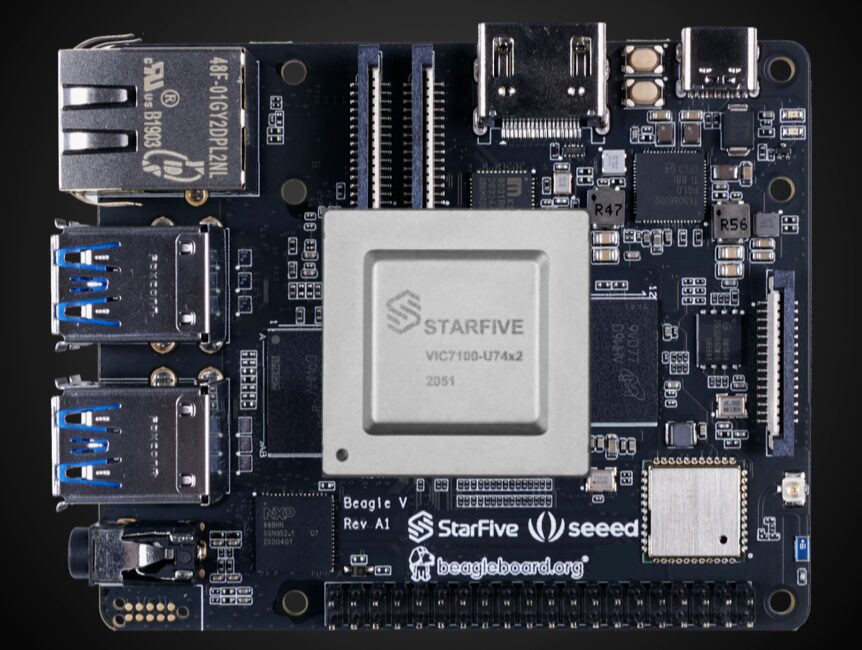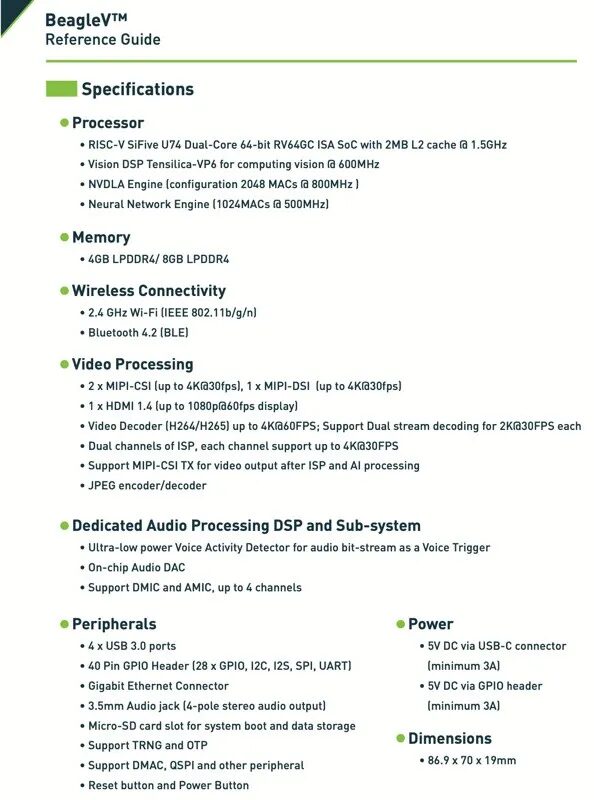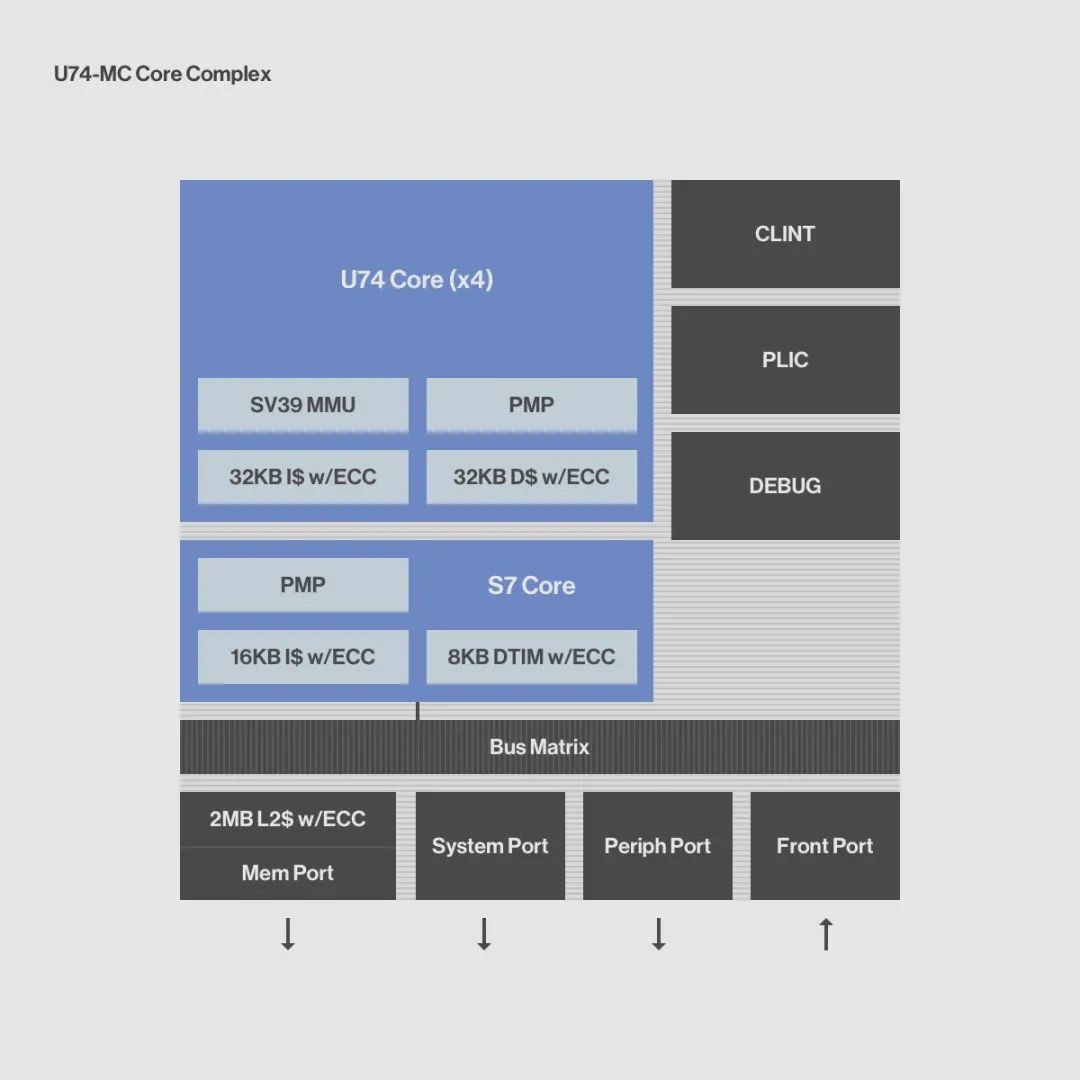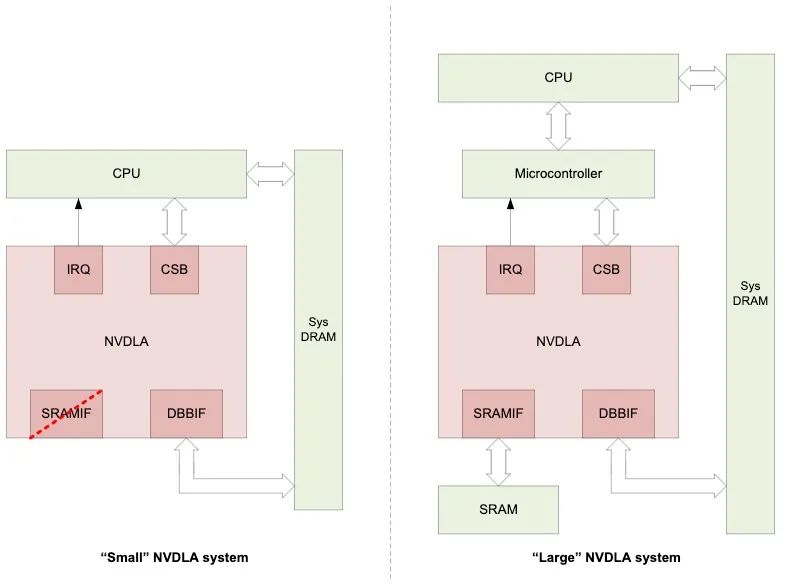
On January 13, 2021, SiFive Technology released the Starlight AI single board computer (BeagleV), which is a significant development for enthusiasts of RISC-V and open-source technology. BeagleV has several highlights:
-
A 1.5GHz RISC-V multi-core CPU that can boot Linux, functioning as a single-board computer (SBC).
-
It has certain AI capabilities, integrating NVDLA and Starfive’s self-developed NNE engine.
-
The price is reasonable, much cheaper than the $999 HiFive Unleashed.
Today, I received the manual for the board and will conduct a technical analysis.

CPU Section
The current BeagleV uses the Starfive Jinghong 7100 RISC-V SoC, and this version is equipped with a dual-core Sifive U74, supporting the RV64GC instruction set, with a main frequency of 1.5GHz. Future versions will adopt a quad-core U74.

From the Sifive website, we can see the 4-core U74-mc structure as shown in the image above. The U74 core features an 8-stage pipeline and a dual-issue superscalar architecture. Each core is equipped with a 32KB L1 instruction cache and a 32KB L1 data cache. The four U74 cores share a 2MB L2 cache. Among them, the small core S7 integrated in the U74-mc is only responsible for management tasks and does not perform specific calculations.
The U74 is positioned as a mid-range processor core, primarily competing with ARM’s Cortex-A55 (A55 is a dual-issue in-order superscalar that supports the ARMv8.2A instruction set). The specifications of the U74 are quite good, with the only regret being that the instruction set does not support Vector extensions, while the A55 has Neon vector extension instructions.
AI Section
The BeagleV currently features two AI NPU accelerators, one is the open-source NVDLA, and the other is the self-developed NNE from Starfive.

The NVDLA part adopts the NVDLA Large configuration, with 2048 MACs, 800MHz, and 2m SRAM. The int8 peak performance is approximately 3.2TOPS. NVDLA has already open-sourced corresponding compilation tools, supporting the conversion of Caffe models, etc.
My personal experience with NVDLA is limited; I feel that the toolchain is somewhat outdated, primarily focused on converting Caffe models. Given the current trend of model training primarily using PyTorch and TensorFlow, several additional steps are required, and the workload required for supporting specific layers still needs evaluation.
The self-developed NNE part currently has limited information, featuring 1024 MACs, 500MHz, with an int8 peak performance of approximately 1.0TOPS.
Image and Voice Section
-
Equipped with Tensilica-VP6 DSP, 600MHz.
-
Supports two MIPI cameras, dual-channel ISP, capable of achieving 4K 30FPS.
-
One HDMI output.
-
Video decoder supporting H.264/265 decoding, capable of reaching 4K 60FPS. Supports JPEG encoding and decoding.
From the specifications, it looks quite good, suitable for applications like smart cameras and AI boxes. Particularly, the integrated VP6 can accelerate more visual tasks beyond deep learning models.
-
Voice DAC.
-
Supports four DMICs and AMICs.
Other Hardware Section
-
Memory is available in 4GB and 8GB LPDDR4 versions. For an SBC, 4GB is sufficient, even for AI video applications.
-
The wireless section supports 2.4GHz Wifi and Bluetooth 4.2.
-
Equipped with four USB 3.0 ports, which is a highlight.
-
Gigabit Ethernet.
-
Micro-SD slot.
-
Other GPIO, UART, etc., I will not elaborate on.
Software Section
-
Supports Linux kernel 5.9.14, and will migrate to the LTS version in the future.
-
The RVBoards open-source ecosystem will enrich the RISC-V software environment from the OS Kernel, RISC-V Computing Library (RVCL), and AI platform aspects.
Conclusion
The configuration of BeagleV is quite good, and I look forward to its official launch in March. During the technical analysis, I feel that BeagleV has the potential to replace the HiSilicon Hi3519A in AI applications, although specific situations still require empirical analysis. The SBC hardware platform is already in place, but the software ecosystem needs further improvement, and I hope to work together with everyone.

Follow the construction of the RVBoards open-source software ecosystem.
> For cooperation and communication, contact: [email protected]